Is Your Romania Factory Struggling with cost-competitive pallet systems for logistics hubs? Try a Pallet Changing Machine
Are you managing a busy factory or logistics hub, maybe in an industrial center like those in Romania? You are likely always looking for ways to cut costs and improve efficiency. You see the numbers every day. You know that small inefficiencies in your logistics process add up to big financial losses. Manual pallet handling, damaged goods, and slow turnaround times are not just minor issues. They are leaks in your profit pipeline, making it harder to compete. What if there was a single piece of equipment that could plug many of these leaks?
Yes, a pallet changing machine is a powerful and proven solution for factories and logistics hubs seeking a more cost-competitive pallet system. This equipment automates the transfer of goods from one pallet to another. This simple function directly reduces labor costs, prevents product damage, increases shipping speed, and enhances workplace safety. It is a strategic investment that can deliver a significant return by optimizing a critical part of your supply chain.
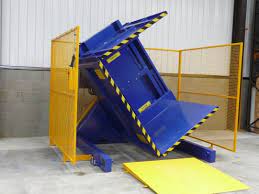
I have spent my entire career in the packaging and material handling industry. I have walked through hundreds of factories and have seen these challenges firsthand. You might think a pallet changer is just another machine. But I want to show you how it can be a central part of solving some of your biggest operational headaches. It is not just for specialized industries. It is a practical tool for any operation that moves goods on pallets. Let's look at the specific problems it can solve for you.
How can a pallet changer directly reduce your operational costs?
Your financial controller probably talks about operational expenditures constantly. You are always under pressure to lower them. You look at big expenses like energy and raw materials. But what about the hidden costs in your warehouse or shipping bay? Things like paying for a team to manually restack a pallet, writing off a shipment damaged by a forklift, or paying high rental fees for specialized pallets. These costs drain your budget every single day. There is a smarter way to handle this.
A pallet changing machine attacks these costs from multiple angles. It significantly cuts down on the manual labor needed for pallet transfers. It protects your products from damage during the handling process. And it gives you the flexibility to use the most cost-effective pallet for every situation, whether it is for internal storage or external shipping. Each of these benefits translates directly into measurable savings on your balance sheet.
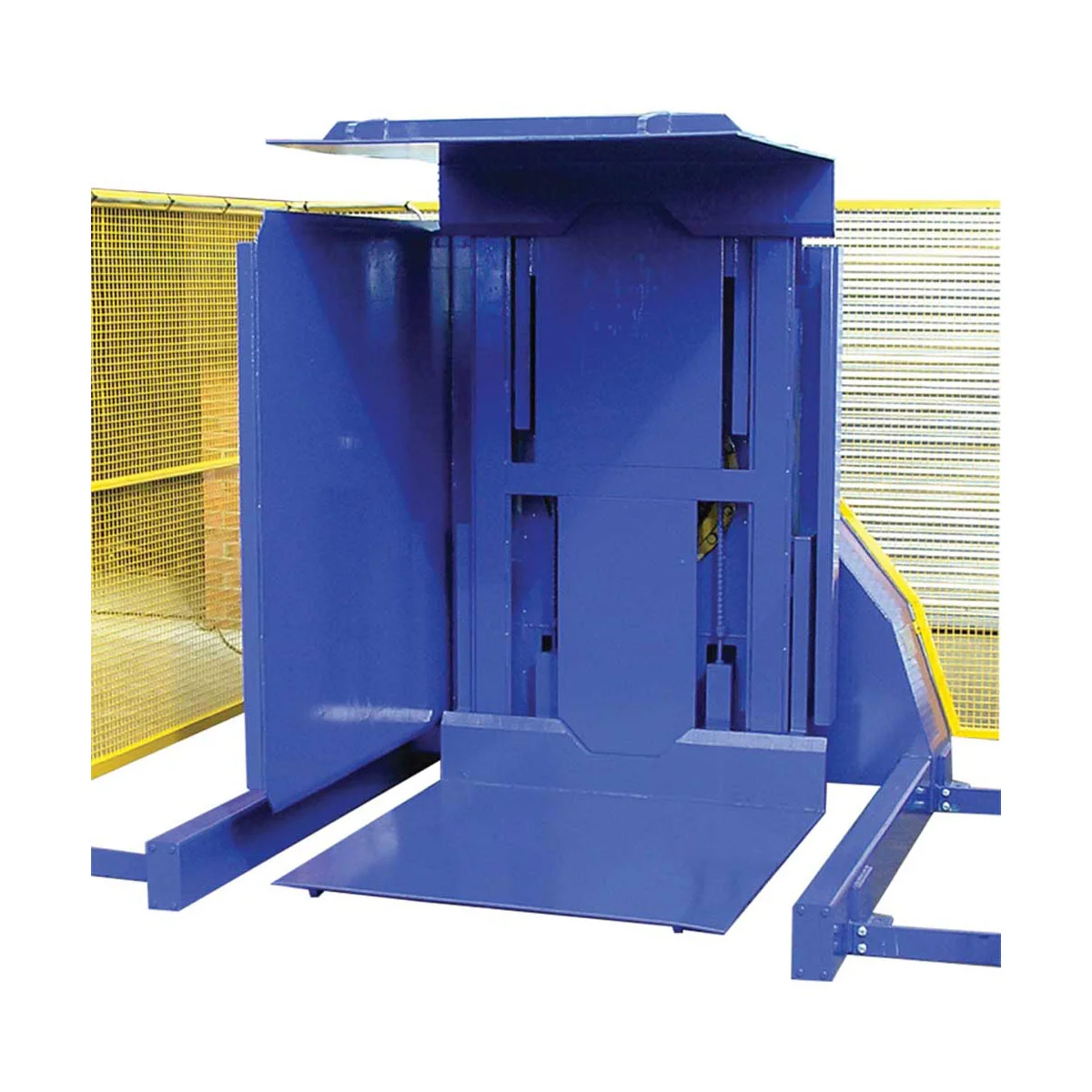
A Deeper Look at Cost Reduction
Let's break down exactly how this machine saves you money. It is not just one thing; it is a combination of factors that create a strong financial case for the investment. As an engineer and a factory owner myself, I always focus on the numbers. The return on investment has to be clear and compelling.
Labor Cost Savings
Manual pallet handling is incredibly labor-intensive. Think about your current process. It likely involves two, maybe three workers. They have to break down a pallet, lift individual boxes or bags, and restack them on a new pallet. This is slow, inefficient, and expensive. A pallet changer automates this entire task. One operator can manage the process in a fraction of the time. The machine does all the heavy lifting. This frees up your workers to perform more value-added tasks. You are not just saving on salaries and benefits. You are also reducing the risk of costly workplace injuries associated with manual lifting, which can impact your insurance premiums and lead to lost workdays. The efficiency gain is massive. A task that took a team 20 minutes can now be done by one person in two minutes.
Product Damage Reduction
Every time a product is handled manually, there is a risk of damage. Boxes get dropped, bags are torn, and containers are dented. When you transfer an entire pallet load by hand, these risks multiply. Even a small amount of damage can lead to an entire pallet being rejected by a customer. This means lost revenue, disposal costs, and potential damage to your brand's reputation. A pallet changing machine handles the entire load as a single, stable unit. It clamps the load securely, rotates it smoothly, and transfers it without the jolts and impacts of manual restacking. The process is controlled and gentle. This dramatically reduces damage rates, ensuring your products arrive at their destination in perfect condition.
| Metric | Manual Pallet Transfer | Automated Pallet Changer | Impact |
|---|---|---|---|
| Labor Required | 2-3 Workers | 1 Operator | 50-67% reduction in labor for this task |
| Time per Pallet | 15-20 Minutes | 1-2 Minutes | Over 90% increase in speed |
| Typical Damage Rate | 1-3% of value | < 0.1% of value | Significant reduction in write-offs |
| Injury Risk | High (Back, Strains) | Low (Supervisory) | Lower insurance costs, less lost time |
Pallet Fleet Optimization
Many companies operate with a mixed pallet fleet. You might use high-quality, durable plastic or pooled pallets (like CHEP or LPR) for your internal operations. These are expensive but built to last. For shipping to customers, especially internationally, you want to use cheap, one-way-use heat-treated wood pallets to avoid the cost and complexity of getting them back. A pallet changer makes managing this process simple. You can easily transfer finished goods from your expensive in-house pallets onto cheap shipping pallets right before they are loaded onto the truck. This keeps your valuable pallets within your facility, reducing loss and eliminating high rental fees. The savings on pallet purchasing and rental alone can often justify the investment in a pallet changer within a short period.
Can this machine integrate with my push for digital transformation?
You are investing heavily in smart technology. You are implementing Manufacturing Execution Systems (MES), installing IoT sensors, and building data analysis platforms. Your goal is total production visibility. You want to replace guesswork with hard data. But then you look at your shipping department, and you see a black hole. Manual processes, paper checklists, and no real-time data. This gap undermines your entire Industry 4.0 strategy. How can you claim to have a smart factory if a critical part of your operation is still running on old methods?
Absolutely. A modern pallet changing machine is not just a mechanical device; it is a smart, connected asset. It is designed to be a node in your digital factory ecosystem. These machines come equipped with PLCs that can communicate directly with your MES or Warehouse Management System (WMS). They provide a steady stream of valuable data, closing the information gap in your logistics hub and helping you achieve the comprehensive production visualization you are aiming for.
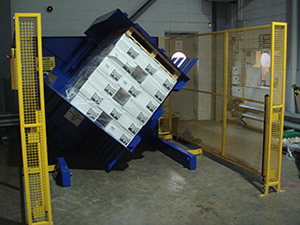
A Deeper Look at Digital Integration
Let's move beyond the idea of a simple, standalone machine. A modern pallet changer is a key enabler of the smart factory. For a forward-thinking leader like you, who understands the power of data, this is where the machine becomes a strategic tool, not just an operational one. It helps you see, understand, and optimize your logistics in ways that are impossible with manual processes.
Connecting to MES/WMS
At the heart of a modern pallet changer is a Programmable Logic Controller (PLC). This is the machine's brain. This PLC can be easily configured to communicate with your higher-level factory management systems using standard industrial protocols like OPC UA or MQTT. What does this mean in practical terms? It means your MES can automatically know when a pallet has been changed, how long the cycle took, and if any errors occurred during the process. This data can be used to track throughput in real-time. You can verify that your shipping department is keeping pace with production. You can automatically update inventory status, from "on production pallet" to "on shipping pallet, ready for dispatch." This eliminates manual data entry, reduces errors, and gives you a true, real-time picture of your finished goods status.
The Role of IoT for Predictive Maintenance
One of your biggest challenges is aging equipment and the resulting downtime. This is where IoT integration becomes a game-changer. We can equip a pallet changer with a variety of sensors that monitor its health in real-time. We can track motor temperature, hydraulic pressure, vibration levels, and the cycle count of key components. This data is streamed to your analytics platform. Instead of waiting for a breakdown, your system can identify patterns that suggest a future failure. For example, a gradual increase in motor vibration might indicate a bearing is beginning to wear out. Your maintenance team gets an alert to schedule a replacement during the next planned shutdown. This is the essence of predictive maintenance. It helps you move from a reactive "fix it when it breaks" model to a proactive "fix it before it breaks" model, which is crucial for achieving your goal of 95% equipment uptime.
| Data Point from Pallet Changer | Enabling Decision or Action | Strategic Goal Supported |
|---|---|---|
| Cycle Count & Time | Throughput analysis, bottleneck identification | Increase Capacity Utilization |
| Fault Codes & Alarms | Root cause analysis of stoppages | Improve Equipment Uptime |
| Motor Temperature & Vibration | Predictive maintenance scheduling | Lower Operating Costs (less downtime) |
| Load Weight (with scale option) | Automatic data capture for shipping docs | Advance Digital Transformation |
This level of integration transforms a piece of material handling equipment into an intelligent data source that fuels your continuous improvement and cost-reduction efforts.
How does a pallet changer improve safety and address aging equipment concerns?
You mentioned that many of your key production lines have equipment that is over 15 years old. This aging machinery brings two major risks: declining reliability and increasing safety hazards. The same is true for manual processes. A process that relies on human strength is inherently unreliable and unsafe. Your team faces the daily risk of back injuries, strains, and other accidents from lifting heavy, awkward loads. A single serious injury can have devastating consequences for your employee and your company. At the same time, an unexpected failure in your shipping process can create a bottleneck that ripples back through your entire factory.
A pallet changer directly addresses both safety and reliability. It improves safety by automating one of the most physically demanding and high-risk manual tasks in any logistics hub. It replaces a human-dependent process with an engineered, controlled, and protected system. This simultaneously tackles the problem of aging, unreliable methods by introducing a new, robust piece of equipment designed for consistent, round-the-clock performance, helping you secure your production and protect your people.
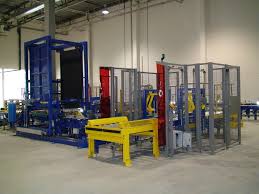
A Deeper Look at Safety and Reliability
As a leader, the safety of your people is your responsibility. As a business owner, the reliability of your operation is your foundation. These two concepts are deeply connected. A safe operation is often a reliable one. Investing in modern automation is one of the most effective ways to improve both.
Mitigating Ergonomic Risks
The Occupational Safety and Health Administration (OSHA) and similar bodies worldwide identify manual material handling as a leading cause of workplace injuries. Manually depalletizing and repalletizing goods involves repetitive lifting, twisting, and bending, often with heavy loads. This puts immense strain on the musculoskeletal system. The result is a high rate of back injuries, shoulder strains, and other issues. These injuries are painful for the employee and expensive for the company. Costs include medical expenses, increased insurance premiums, lost productivity, and the cost of hiring and training temporary replacements. A pallet changer removes the person from this hazardous equation. The machine bears the load. The operator's job becomes supervisory, pushing buttons from a safe distance. This single change can drastically reduce your facility's recordable injury rate and foster a stronger safety culture.
Engineered Reliability vs. Manual Variability
Human workers are not machines. Their performance varies. It is affected by fatigue, morale, and physical condition. The speed and quality of a manual pallet transfer at the end of a long shift will not be the same as at the start. This variability creates unpredictability in your output. An automated pallet changer, on the other hand, delivers engineered reliability. It performs its task with the same speed, precision, and care every single time. It does not get tired or distracted. Its performance is consistent and predictable. When you are trying to precisely manage production schedules and meet tight shipping deadlines, this level of consistency is invaluable. It replaces an unreliable, aging process with a modern, dependable one, contributing directly to your goal of stable and high-capacity utilization.
Modern Safety Features
Modern pallet changers are designed with safety as a top priority. They are not just raw power; they are intelligent systems. Standard features include safety light curtains, which immediately stop the machine if a person enters the operational area. Physical safety guarding and cages create a protective barrier. Emergency stop buttons are strategically placed for instant access. The machine's PLC runs safety-rated logic, constantly monitoring all safety devices to ensure they are functioning correctly. This multi-layered approach to safety provides a solution that is not only more efficient but fundamentally safer than any manual alternative.
My personal journey: Why I believe the right machine is more than just steel
I have read about your challenges, and they feel very familiar to me. As someone who started on the factory floor as an engineer, I understand the pressure to increase output while cutting costs. I have seen firsthand how a seemingly small problem in one area, like packaging or logistics, can cause major problems for the entire business.
When I started my own packing machine factory, I carried those lessons with me. I remember one of our early clients. He was a lot like you: a smart, driven owner of a successful steel pipe factory. He had invested in the best pipe mills and finishing lines. His product quality was excellent. But his company was struggling to be a top-tier supplier to the automotive industry. The reason? His shipping department was a constant bottleneck. They transferred the heavy bundles of pipes from sturdy factory pallets to simple wooden skids for shipping. They did it with cranes and manual labor. It was slow, dangerous, and they frequently damaged the pipes.
He was focused on the big machines in his production line, but the problem was at the very end of the process. We worked with him and installed a custom-built pallet inverter designed for his heavy, long loads. Six months later, I visited him again. He told me the machine had paid for itself already, just from the reduction in damaged products. But he said the biggest change was something else. His shipping team was safer, and their morale was higher. They could now easily keep up with production, and his factory finally earned a top performance rating from their biggest automotive customer.
That experience solidified my mission. It is why I founded SHJLPACK and why I share my knowledge on this platform. My goal is not just to sell a machine. It is to provide a total solution. It is about deeply understanding your business—your goals, your pressures, and your challenges—and then applying my engineering experience to help you find the right solution. The right machine is more than just steel and motors. It is a tool that can unlock new levels of efficiency, improve the lives of your employees, and give your business a competitive edge.
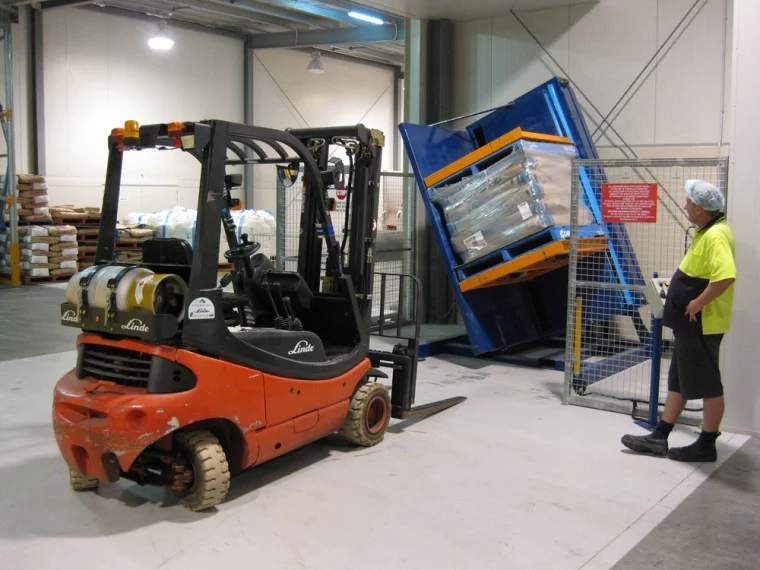
Conclusion
A pallet changing machine is more than just equipment. It's a strategic tool for cost reduction, digitalization, and enhanced safety in your Romania-based or other international logistics hub.




